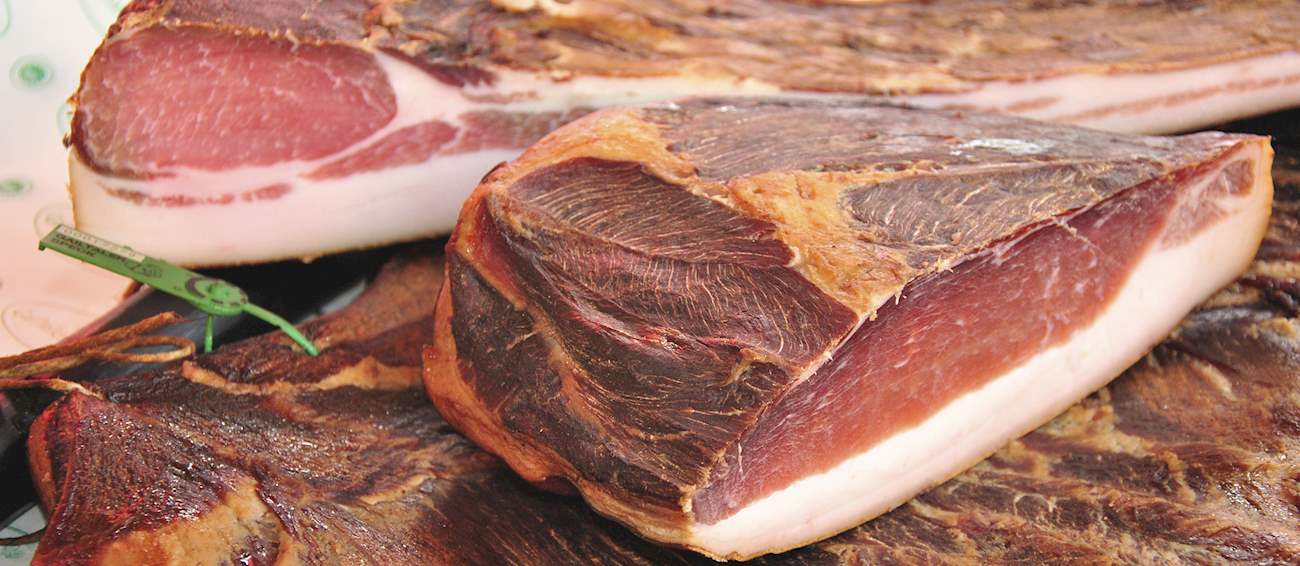The Italian word pancetta or pancia literally translates to 'belly' which means Pancetta di Calabria is actually a dry cured pork belly, a variety of unsmoked bacon. Fresh meat cuts come from pigs born and raised exclusively in this Italian region, and pancetta is made by processing 3 to 5 centimeters thick rectangular slabs of bacon with skin, weighing between 3 to 6 kilos.
After being salted for about 4 to 14 days, it is washed and soaked in red wine vinegar, coated with pepperoncino Calabrese chili powder and lastly left to mature for at least 30 days. Pancetta di Calabria is traditionally eaten with warm sourdough breads, accompanied by full-bodied red wines.
Traditionally produced in the Alpine Gailtal region since the 15th century, the delicious Gailtaler Speck is an Austrian variety of bacon. The meat used for its production must come from pigs reared either in the Gailtal Valley or the wider Carinthian area.
It is first dry-salted, pressed, and marinated in brine; then seasoned with pepper, garlic, and juniper; and lastly air-cured and cold-smoked over beech and elder wood. Characterized by a rich, salty flavor and a well-pronounced aroma of smoked meat, this Carinthian delicacy is typically enjoyed as an appetizer but it can also be used in cooking, as it imparts a smoky flavor to various dishes.
Originating from Zeeland, Zeeuws spek is a traditional bacon seasoned with salt, pepper, and bay leaves. It is usually marinated in a combination of spices, oil, and mustard, and is then either broiled, grilled, or smoked, developing an intense barbecue-like flavor in the process.
If consumed in the most traditional way, the bacon is paired with bread and mustard, although it can also be consumed with baked potatoes or used in various salads.
Boczek is a general name for numerous varieties of Polish bacon that is made with belly and rib meat, usually pork. After it has been cured, the meat is usually smoked, double-smoked, smoked and cooked, hunter-style, or with ribs on, known as boczek z kością.
Polish boczek often enhances the flavor of slow-cooked dishes such as soups, casseroles, bigos, or golabki. This traditional cured meat product is also commonly eaten with scrambled eggs or with a slice of rye bread smeared with mustard.
TasteAtlas food rankings are based on the ratings of the TasteAtlas audience, with a series of mechanisms that recognize real users and that ignore bot, nationalist or local patriotic ratings, and give additional value to the ratings of users that the system recognizes as knowledgeable. TasteAtlas Rankings should not be seen as the final global conclusion about food. Their purpose is to promote excellent local foods, instill pride in traditional dishes, and arouse curiosity about dishes you haven’t tried.






